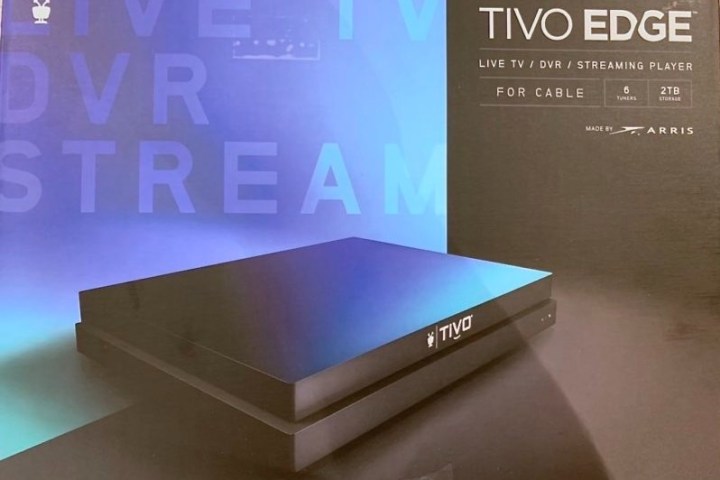
It’s probably not a coincidence that mere days before IFA 2019 in Berlin, some leaked photos of what is clearly TiVo’s next-gen DVR have emerged, courtesy of Zatz Not Funny. It’s called the TiVo Edge, and if the leaked photos are accurate, it will be a much more conventionally shaped set-top box than the company’s current generation of DVRs — the TiVo Bolt and Bolt OTA — which sport a controversial wave-like design. There will be three versions according to the leaked report: One for standard cable, one for CableCARD, and an OTA (over the air) model.
The six-tuner, 2TB DVR will preserve all of the Bolt’s features including 4K, Alexa compatibility, skip mode, and TiVO’s own voice-driven Vox remote options. What’s new is the Edge’s support for Dolby’s two major home theater technologies, Dolby Vision (Dolby’s proprietary HDR format) and Dolby Atmos (the company’s immersive surround sound format). But before TiVo subscribers get too excited by these additions, it’s worth noting that the Bolt DVRs already have HDR10 and HLG capabilities, but none of the onboard streaming apps like Netflix, Amazon Prime Video, or Plex have been updated by their respective publishers to take advantage of the Bolt’s HDR chops. TiVo puts the onus on the streaming companies for their lack of
Dolby Vision (and
There’s been no leaked info so far regarding the price or the availability of the new TiVo Edge, but we’ll update you as soon as we hear anything.
Editors' Recommendations
- What we want to see from the next Apple TV 4K
- The hidden costs of buying a 4K TV are way higher than you think
- What is Dolby Vision? The dynamic HDR format fully explained
- 4K TV buying guide: Everything you need to know
- Sony brings laser power, native 4K to every 2022 projector




